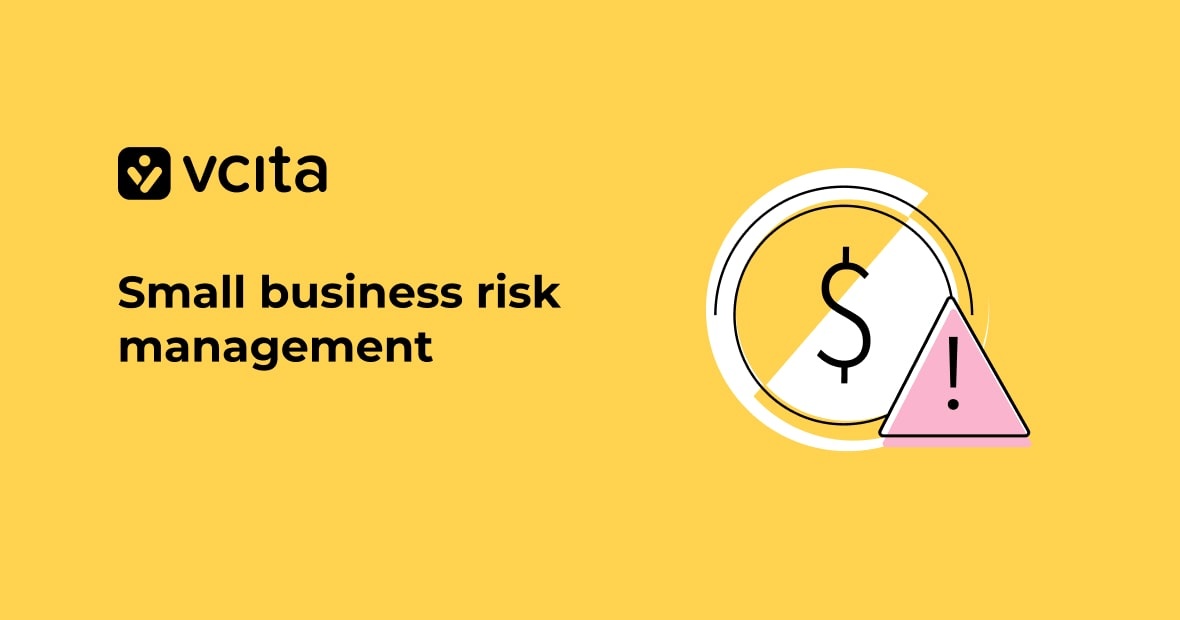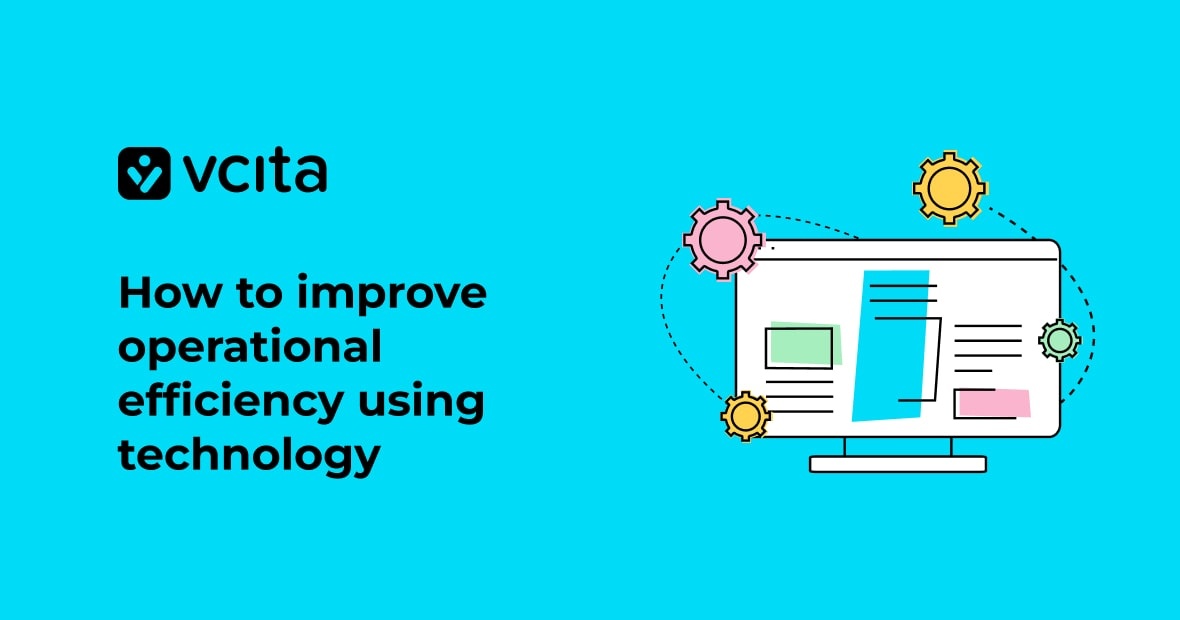Opening a business is a dream for many. But every business faces risks that could interrupt business operations, or even put your company out of work entirely. As a business owner, you need to protect your livelihood by managing the risks.
Business risks cover a wide range of issues, including property losses from slip and fall accidents or damage, potential risks from international trade, cash flow interruptions, or business interruption. It’s best to consider all these risks upfront with effective small business risk management, so you can take steps to prevent and mitigate them.
This article explores key steps for small business owners to safeguard their livelihood through business risk management.
Understanding the risks that face small business owners
As a small business owner, managing the risks your company faces is one of the most important things you can do. Without a risk management plan, you could encounter potential disasters that damage your business.
Some of the major risks that small businesses might have to deal with include:
Property losses
Events like fires, floods, or theft can cause you to lose physical property like equipment, inventory, or office space. Property losses can disrupt your business and cost lots of money. Purchasing business insurance, like property insurance and business interruption insurance, can help cover these costs in the event of a loss.
Financial risk
As a business owner, your personal finances are tied to the success of your company. Changes in sales, the economy, interest rates, or market demands can impact your bottom line and long-term viability. Implementing good financial practices like managing debt levels, maintaining adequate cash reserves, and monitoring key financial metrics can help mitigate financial risk.
Liability risks
Liability risks refer to the potential for lawsuits or legal claims against your business. For example, a customer slip and fall accident in your spa or a product defect could lead to a costly liability claim. Business insurance like general liability insurance helps protect against these risks. You should also implement best practices for safety, security, and quality control.
International trade risks
If you import or export goods or have a global supply chain, your business faces unique risks like currency fluctuations, political instability, or trade policy changes in other countries. Options like purchasing trade insurance, finding diverse suppliers, and carefully monitoring the global economy can help reduce the impact of international risks.
Creating a risk management plan for your small business
A risk management plan helps you identify potential threats, determine how likely they are to occur, and take steps to mitigate them. This protects your livelihood, employees, customers, and bottom line.
The first step to drawing up a business risk management plan is to list every type of risk that could affect your business. Think about how likely it is that the risk could occur, and how much damage it would cause if it does take place. Next, create a risk management plan outlining how you’ll avoid, reduce or insure against each type of risk. Review it regularly, and whenever you experience changes like expanding internationally.
Assess your risk exposure
Here are some of the main scenarios to consider.
Theft, fire, and vandalism
Events like fires or criminal activity like theft or vandalism can result in significant loss of assets, such as vital equipment that you need to do your work, your premises, or your van or work vehicle. Set up security systems to keep your property and equipment safe, and consider business insurance that will pay out if something happens to your assets.
Slips, trips and falls
Slip and fall accidents, injuries due to product issues, or someone tripping over your equipment on site can lead to expensive claims. Review walking areas and stairs at your premises for potential hazards, maintain proper lighting and non-slip materials, and install handrails where needed. Set up safety policies for work sites and make sure employees follow them.
Natural disasters and severe weather
Fires, floods, hurricanes and other natural events can destroy property and impact revenue. Meet with your risk management team to determine how to mitigate damage from disasters common in your area. Create emergency response plans, secure important documents offsite, and plan how you’ll continue business operations if your usual workplace is damaged or inaccessible.
Economic changes
Changes in the economy, industry trends, interest rates and currency values pose financial risks to small businesses. Monitor economic indicators that affect your sector, make contingency plans for potential downturns, and maintain cash flow reserves. Diversify your customer base across international markets when possible, to minimize the impact of risk in any single region.
Cyber threats
Cyber attacks, data breaches and technology failures threaten digital infrastructure and IT security. Conduct regular risk assessments of IT systems, use strong passwords and two-factor authentication, train employees on security best practices, and work with an expert to establish a robust incident response plan. Alongside, using mobile proxies can help protect your network by concealing your IP address, making it harder for attackers to execute targeted attacks or conduct reconnaissance on your systems.
Securing proper insurance coverage for risk mitigation
One of the best ways to mitigate potential risks is through business insurance coverage. There are many different types of business insurance out there, designed to help you cope with various kinds of risks businesses face. Here are some of the main types of insurance you might need, and the risks that it addresses.
Business property insurance
Property insurance covers damage to your business’s physical assets like equipment, inventory, and buildings. Without it, events like fires, thefts, or natural disasters could wipe out your business. Make sure your coverage amounts are adequate to replace major equipment and rebuild your property if needed.
Business interruption insurance
This covers loss of income if your business is forced to temporarily shut down due to an insured event, like a fire or natural disaster. It can help pay for expenses like rent, utilities, and payroll during the interruption, so you can stay afloat. For most small businesses, 12-24 months of coverage is recommended.
Liability insurance
General liability insurance protects your business in the event of claims like slips and falls on your property or injuries from your products. It covers legal costs and any settlements up to your coverage limits. Without it, a single lawsuit could put you out of business. Umbrella insurance provides additional liability coverage beyond your general liability policy limits.
Cyber risk insurance
Cyber risk insurance helps cover costs related to data breaches and system damage. It can help you pay to set up your business information system again if something goes wrong with your servers, or to recover vital data if your system goes down or you fall victim to a ransomware attack. Regular assessments and a clear understanding of security audit costs play a key role in identifying vulnerabilities and strengthening cybersecurity measures, helping businesses better prepare for potential threats.
Implementing strategies to manage financial risk
As a small business owner, managing the risks to your business’ finances should be a top priority. Developing a comprehensive risk management plan can help mitigate potential risks and protect your livelihood.
Business insurance
Every business needs to buy appropriate business insurance. Your business might not need every kind of policy, but you should always buy business interruption insurance. This provides coverage for lost income if your business is forced to temporarily close. You might also need liability insurance, property insurance, and/or cyber threat insurance, depending on your line of work.
Diversify revenue streams
Relying on a single product, service, or customer base is risky. If something happens to affect demand, your business could suffer. The more diversified your business’ income, the less vulnerable it is to changes in the market. You might develop new products or services to sell to your existing customers or find new customers. You could also partner with complementary businesses to cross-promote to each other’s customers.
Manage cash flow carefully
Poor cash flow management is a leading cause of small business failure. Closely monitor your accounts receivable, accounts payable, income, and expenses. Develop a cash flow projection to anticipate lulls or surpluses in revenue, and establish emergency funds in case of unforeseen costs. Consider using small business accounting software to gain insight into your financial situation and make data-driven decisions.
Plan for the long term
While managing day-to-day financial risk is important, don’t lose sight of long term stability. Set financial goals for the next 3-5 years and revisit them regularly. Stay up to date with regulations and trends in your industry, make improvements to operational efficiency and infrastructure, and build strong relationships with customers and partners. Planning for sustainable growth will position your small business for success well into the future.
Maintain business continuity through potential disruptions
As a small business owner, your livelihood depends on managing the risks that could disrupt your operations. Developing a business risk management plan helps ensure your company can withstand potential threats and continue serving customers.
A risk management plan may seem like another task on your plate, but think of it as an investment in your company’s future. Managing risks proactively will help ensure your small business is able to start, survive and thrive for the long term. With a comprehensive plan in place, you’ll have the peace of mind that comes from knowing you’ve done what you can to protect against life’s uncertainties.
By understanding the major risks your small business faces and taking steps to manage them, you’ll sleep better at night knowing your livelihood and company are protected. With the right risk management plan, you can avoid potential disasters and focus on what really matters: growing your business.




























